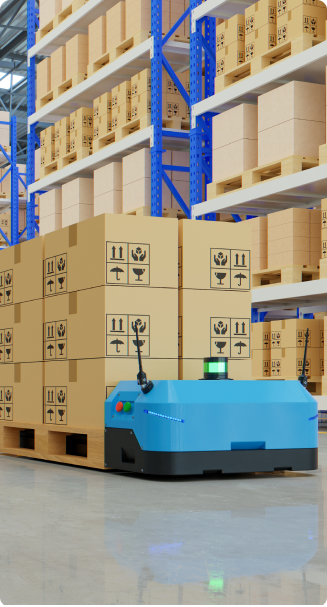A Beginner’s Guide to B2B Applications
By Kavya Gogineni

What are B2B and B2C Apps?
B2B apps are designed to solve enterprise-level problems, whereas B2C apps are crafted to answer individual-level problems.
In the Business-to-Consumer (B2C) context, apps are targeted towards individual consumers. In our daily lives, we generally see apps that are B2C. In the case of B2C apps, the audience mix is more diverse as compared to B2B. For instance, Uber is a popular B2C application that caters to a wide range of individual users for hailing on-demand transport services.
B2B vs B2C Apps: A Comparison
Here’s a comparison between these two types of apps based on various prevalent parameters.

1. Functionality or UI/UX
While both functionality and end-user experience hold the highest stance in terms of characteristics for any application, B2B applications focus on functionality while B2C believes in end-user experience.
This is because B2B apps are more focused on solving or streamlining a business process. Hence, Functionality plays a vital role as compared to UX.
When it comes to B2C an enhanced user experience lets the application in the B2C market acquire a larger consumer base.
2. Development Cost
Due to a higher user base and need for modern user experience (UX) standards, and complex infrastructure; B2C app development is more expensive as compared to B2B app development.
Furthermore, for customer retention, constant updates based on user feedback are essential. This adds to B2C app development costs.
3. Revenue Model
Ideally, the cost per user in B2B apps is more as compared to B2C apps.
This is mainly because the revenue generation for B2B apps is solely based on a periodic subscription or licensing model. Because of complex functionalities and fine curation features specific to a business need, the pricing of the application is set medium-high and is offered at the individual user level and the complete enterprise level.
For B2C apps, the revenue generation can be based on subscription, but, it usually comes from a variety of other sources like advertisements, collaboration marketing, paid promotions, data mining, etc. Because of the variety of revenue sources, large consumer base, and huge market potential for the user data, the pricing per user is often set low – medium range. This helps in getting more users registering and using the application due to affordability.
4. Marketing
In the B2B scenario, the key targets are business owners or decision-makers in the organization. Therefore, the marketing campaigns are targeted towards a few sets of key people, and the approach to planning the budget would be to make appointments, travel, etc. Marketing cost per user would be generally much higher and the conversion rate is very low.
For B2C apps the goal is always to acquire a larger user base. Hence, mass marketing is required. The budget is spent on multiple platforms with a varied mix of marketing medium selection. The cost spent per user will be low and the conversion rates are much higher.
Diving Deeper into B2B Apps
B2B apps are not as easy to understand as their B2C counterparts due to the complexity of their distribution methods, app store restrictions, and more.
Types of B2B App
B2B apps are broadly categorized as the following:
- Commerce:
- External management:
- Internal operations:
B2B Commerce platforms offer many features to support a sales process.
External management software helps businesses to establish coordination between vendors and various entities in the supply chain.
Example: CRM
These are applications that are used to streamline internal operations.
Example: – Payroll applications, Project management software etc.
What Should A B2B App Have?
There are several crucial elements that B2B apps must have to meet the various operational and business needs within an organization.
- Customization and personalization:
- MDM:
- BI and reports:
- Flexible APIs:
- Support and maintenance:
A single solution cannot always cater to multiple businesses. Solutions that work for one business may not work for another. Therefore, it is important to customize a B2B Application according to the customer’s needs.
MDM is crucial for privately distributed B2B apps. It is used to manage all of a company’s devices irrespective of their type or operating system. It maintains the security of the devices while keeping the workforce flexible and productive.
Intelligent reports can help the organization to understand various metrics better. Integrating reports into the app can help businesses draw valuable insights.
APIs allow any application to interact with other applications. Today the world is running on robust integrations, the more flexible an app is, the wider would be its user base. While this completely is subjective to the business case, it is always suggestible that an app has flexible APIs that can be used by other applications
Support and maintenance are crucial for any application. However, it holds greater importance for B2B apps. As business needs keep evolving, it is essential to provide good support while incorporating new changes.
Distribution of B2B Apps
B2B apps are further classified based on their method of distribution.
- Publicly listed B2B apps:
These are available for download directly from the app store.Example: Microsoft Teams.
- Privately listed B2B apps:
These apps are directly marketed and sold to businesses rather than listed on the app stores. Both Apple and Android provide private distribution methods.
Read More in Part 2 of this Blog Series
Building the app is half only the job done, and wouldn’t do much unless you make it accessible and distribute it to appropriate end-users.
Techigai has helped businesses across industries to build and distribute game-changing platforms. To learn more about how we can help with your B2B application development needs , contact us.
“
You can’t have a customer-centric culture without putting your people first. If you don’t know or understand what the current state of the customer experience is, how can you possibly design the desired future state?
Annette Franz
Published Date: 02 February, 2022




